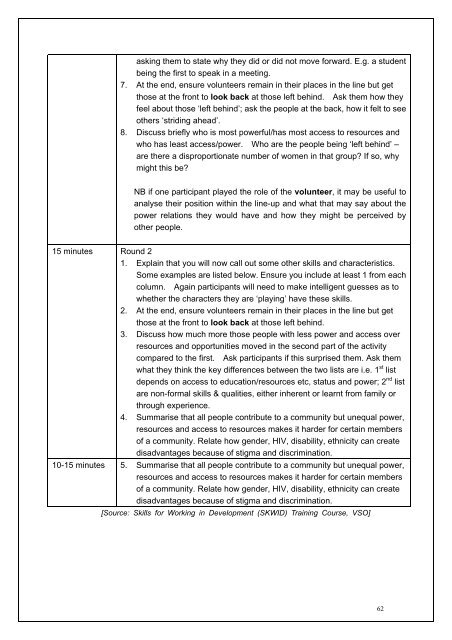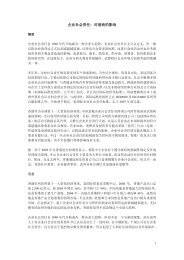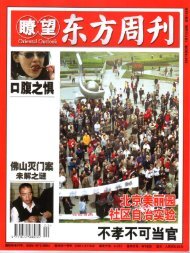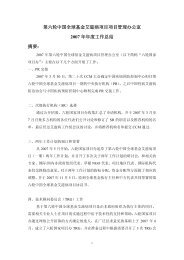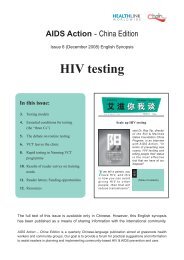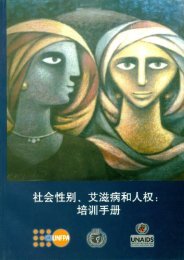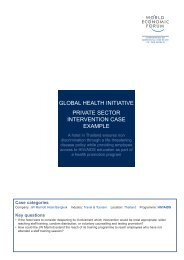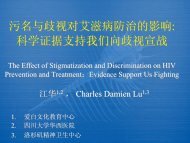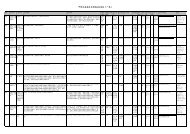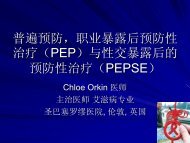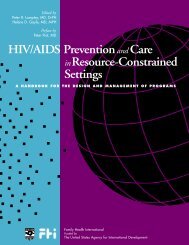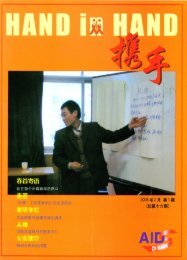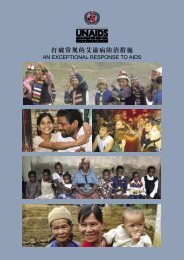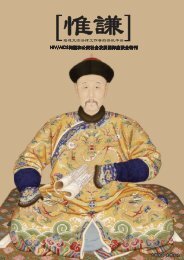What is HIV and AIDS?
What is HIV and AIDS?
What is HIV and AIDS?
Create successful ePaper yourself
Turn your PDF publications into a flip-book with our unique Google optimized e-Paper software.
asking them to state why they did or did not move forward. E.g. a student<br />
being the first to speak in a meeting.<br />
7. At the end, ensure volunteers remain in their places in the line but get<br />
those at the front to look back at those left behind. Ask them how they<br />
feel about those ‘left behind’; ask the people at the back, how it felt to see<br />
others ‘striding ahead’.<br />
8. D<strong>is</strong>cuss briefly who <strong>is</strong> most powerful/has most access to resources <strong>and</strong><br />
who has least access/power. Who are the people being ‘left behind’ –<br />
are there a d<strong>is</strong>proportionate number of women in that group? If so, why<br />
might th<strong>is</strong> be?<br />
NB if one participant played the role of the volunteer, it may be useful to<br />
analyse their position within the line-up <strong>and</strong> what that may say about the<br />
power relations they would have <strong>and</strong> how they might be perceived by<br />
other people.<br />
15 minutes Round 2<br />
1. Explain that you will now call out some other skills <strong>and</strong> character<strong>is</strong>tics.<br />
Some examples are l<strong>is</strong>ted below. Ensure you include at least 1 from each<br />
column. Again participants will need to make intelligent guesses as to<br />
whether the characters they are ‘playing’ have these skills.<br />
2. At the end, ensure volunteers remain in their places in the line but get<br />
those at the front to look back at those left behind.<br />
3. D<strong>is</strong>cuss how much more those people with less power <strong>and</strong> access over<br />
resources <strong>and</strong> opportunities moved in the second part of the activity<br />
compared to the first. Ask participants if th<strong>is</strong> surpr<strong>is</strong>ed them. Ask them<br />
what they think the key differences between the two l<strong>is</strong>ts are i.e. 1 st l<strong>is</strong>t<br />
depends on access to education/resources etc, status <strong>and</strong> power; 2 nd l<strong>is</strong>t<br />
are non-formal skills & qualities, either inherent or learnt from family or<br />
through experience.<br />
4. Summar<strong>is</strong>e that all people contribute to a community but unequal power,<br />
resources <strong>and</strong> access to resources makes it harder for certain members<br />
of a community. Relate how gender, <strong>HIV</strong>, d<strong>is</strong>ability, ethnicity can create<br />
d<strong>is</strong>advantages because of stigma <strong>and</strong> d<strong>is</strong>crimination.<br />
10-15 minutes 5. Summar<strong>is</strong>e that all people contribute to a community but unequal power,<br />
resources <strong>and</strong> access to resources makes it harder for certain members<br />
of a community. Relate how gender, <strong>HIV</strong>, d<strong>is</strong>ability, ethnicity can create<br />
d<strong>is</strong>advantages because of stigma <strong>and</strong> d<strong>is</strong>crimination.<br />
[Source: Skills for Working in Development (SKWID) Training Course, VSO]<br />
62


